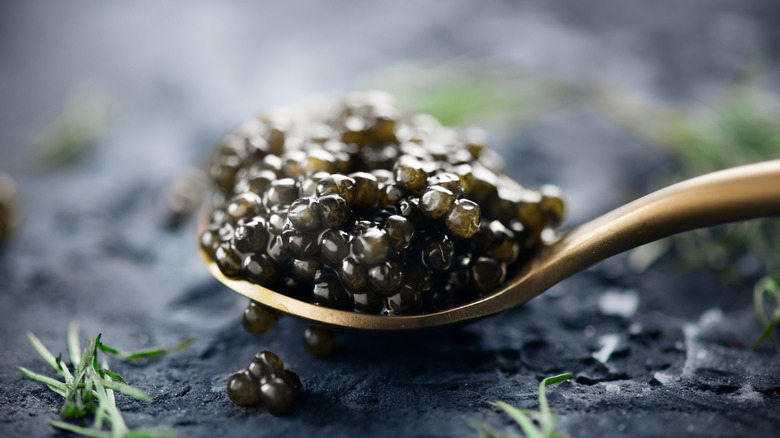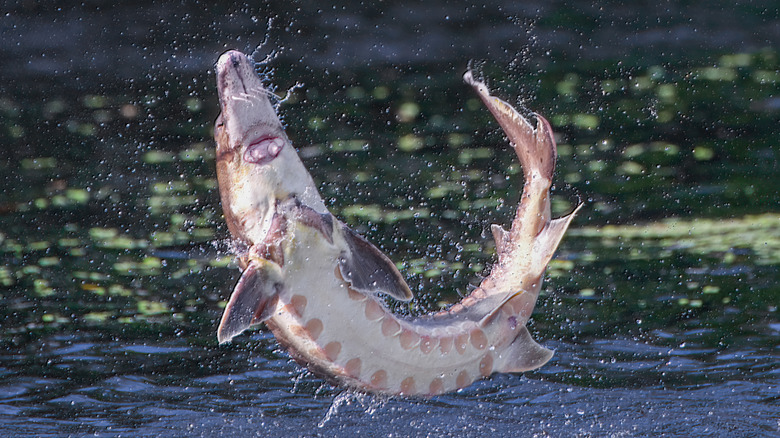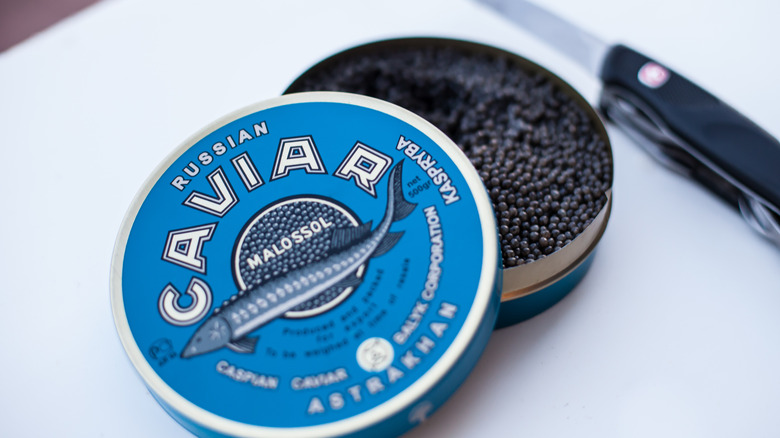The Time New Jersey Controlled The Caviar World
When you think of luxury foods that are the epitome of wealth you may think of oysters, caviar, lobster, and truffles. While truffles have been a delicacy since Ancient Greece, oysters and lobster were both considered poor man's food up until the 19th century. Caviar, on the other hand, has an unusual history. While there are historic records pertaining to the fishing of sturgeon, records of harvesting the roe don't seem to appear until the 9th century, per Petrossian. The word itself comes from the Persian for 'fish roe'. According to historian David Jacoby, there were records pertaining to the trade of caviar between Greece and Russia during the Byzantium era from at least the 12th century. In England, beluga caviar was reserved for monarchs as its popularity started to spread all over Europe.
In America, however, the fish egg delicacy has a complicated history. According to journalist Inga Saffron, up until the mid-19th century, many people considered caviar pig fodder and while natives were fond of sturgeon, European settlers weren't so interested in its "strong, oily flavor," per Eater. In the same way, some US bars use salted peanuts to encourage more drinking, caviar was a free "bar snack" back in the days before it became the height of fashion. Of course, when demand for things increases and supply diminishes, the price is bound to go up.
Delaware Bay: A natural sturgeon breeding ground
In Inga Saffron's book "Caviar: The Strange History and Uncertain Future of the World's Most Coveted Delicacy" she says that the large sturgeon fish were so abundant in Delaware Bay during the spring that, "ferry passengers were treated to acrobatic displays of leaping fish, and occasionally had to scurry to avoid one nose-bombing the deck." Considering they were reported to weigh around 800 pounds a piece, this must have been quite alarming for the people onboard.
On the banks of the bay, in an area now known as Bayside, there was a town known as Caviar and once thought of as "New Jersey's equivalent of a gold rush" per Head Topics. Things changed for the area in the 1870s when Henry Schacht began to farm the sturgeon, meaning the fish would be available during the off-season. Immigrant, Bendix Blohm, also arrived in the area with the hope of exporting caviar back to locations where it was popular in Europe. Others in the area realized the potential and got in on the action. The town — now known as Caviar — was now making the equivalent of around $2 million in today's money every season, per Eater. However, the boom was short-lived. According to an 1899 report on fishing in Delaware Bay by John N. Cobb of the United States Fish Commission, there was a sharp decline in the amount of fish being produced in the area by that time.
All good things must come to an end
Inga Saffron writes in her book, "There was so much money to be made. The fishing was so intense. And the environmental devastation was so enormous that sturgeon were just wiped out in this really short span of time," per Eater. For several decades, "North America was exporting more caviar to Europe than Russia." However, when there's no program in place to ensure the survival of the species and they can't produce more than is harvested, this is bound to end in disaster. According to Delaware Surf Fishing the commercial fishing industry in Delaware Bay "collapsed in 1901" due to the decline in the amount of sturgeon available in the area. They reported that "Atlantic sturgeon are now thought to be absent from at least 14 rivers they used historically."
According to the National Oceanic and Atmospheric Administration Fisheries, "Atlantic sturgeon are slow-growing and late-maturing" meaning that harvesting them in the numbers they did during the late 19th century was unsustainable. Today, sturgeon in the area are listed on the Endangered Species List, and fishing them is prohibited. However, they are still under threat of being accidentally caught in "commercial fisheries" and due to "habitat degradation" caused by human activities.


